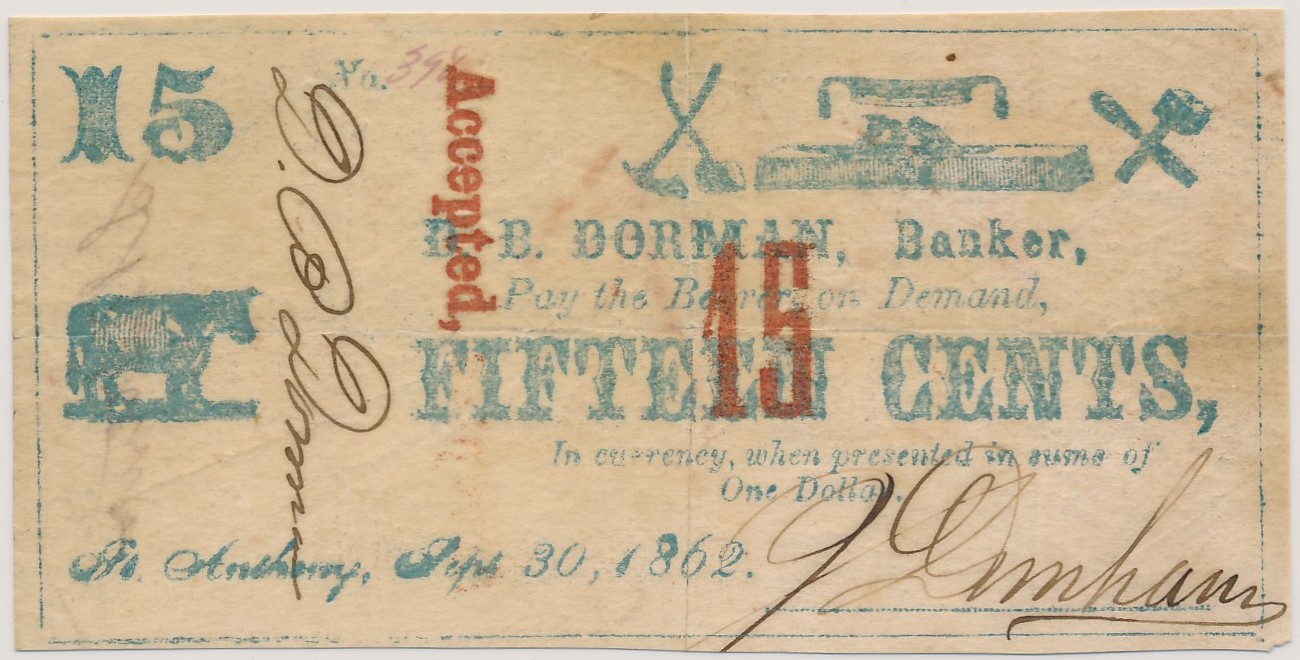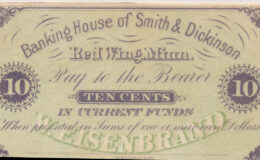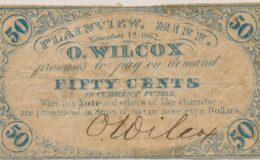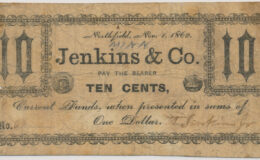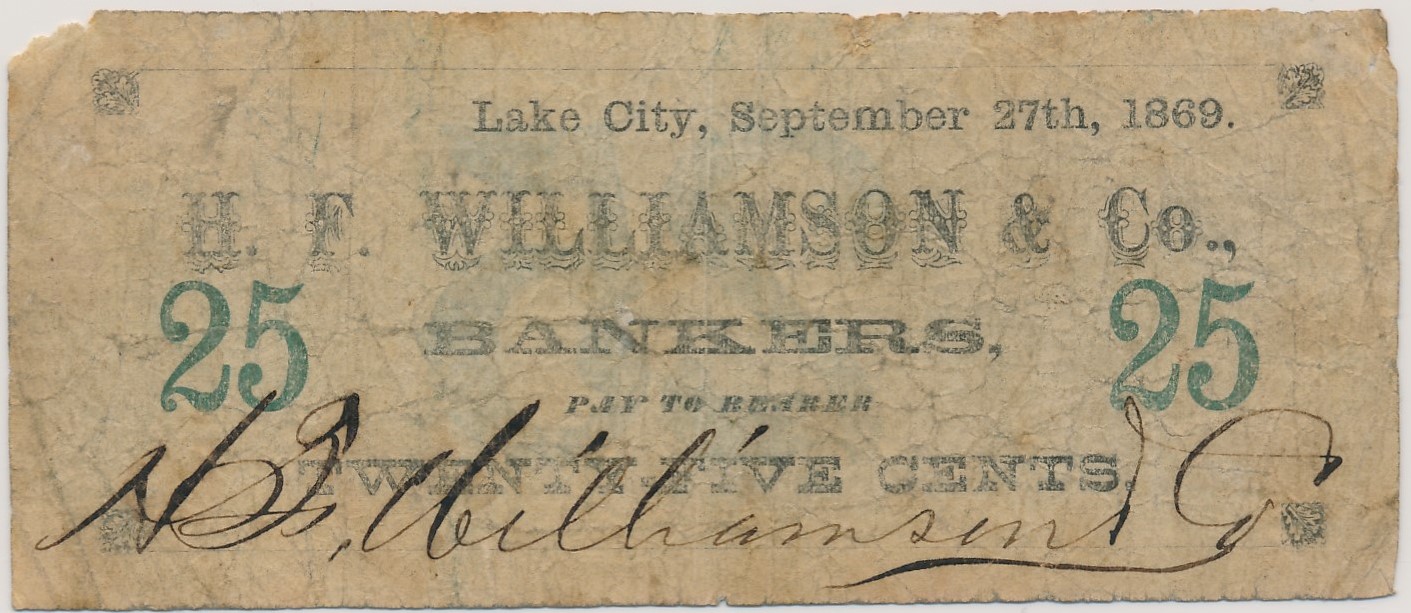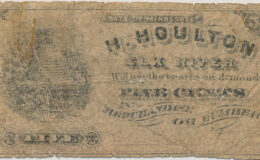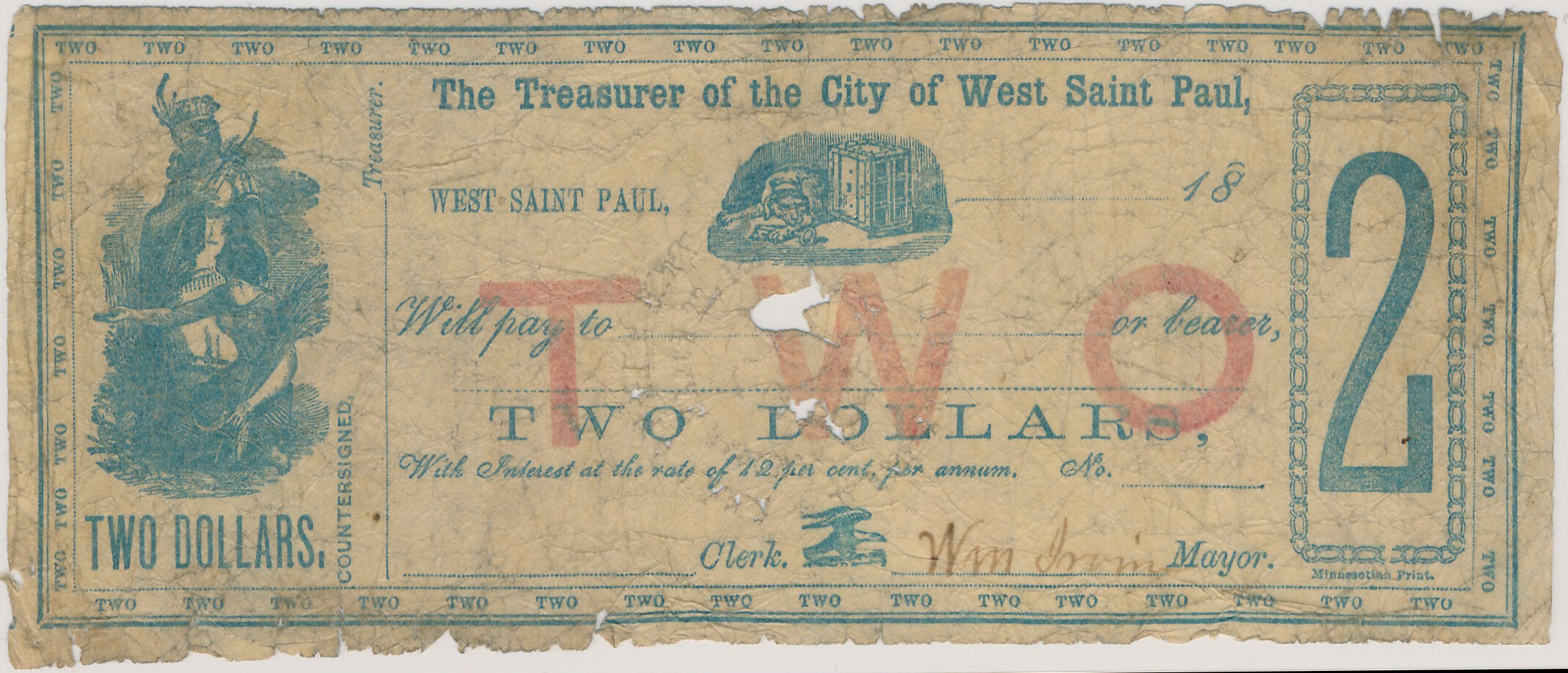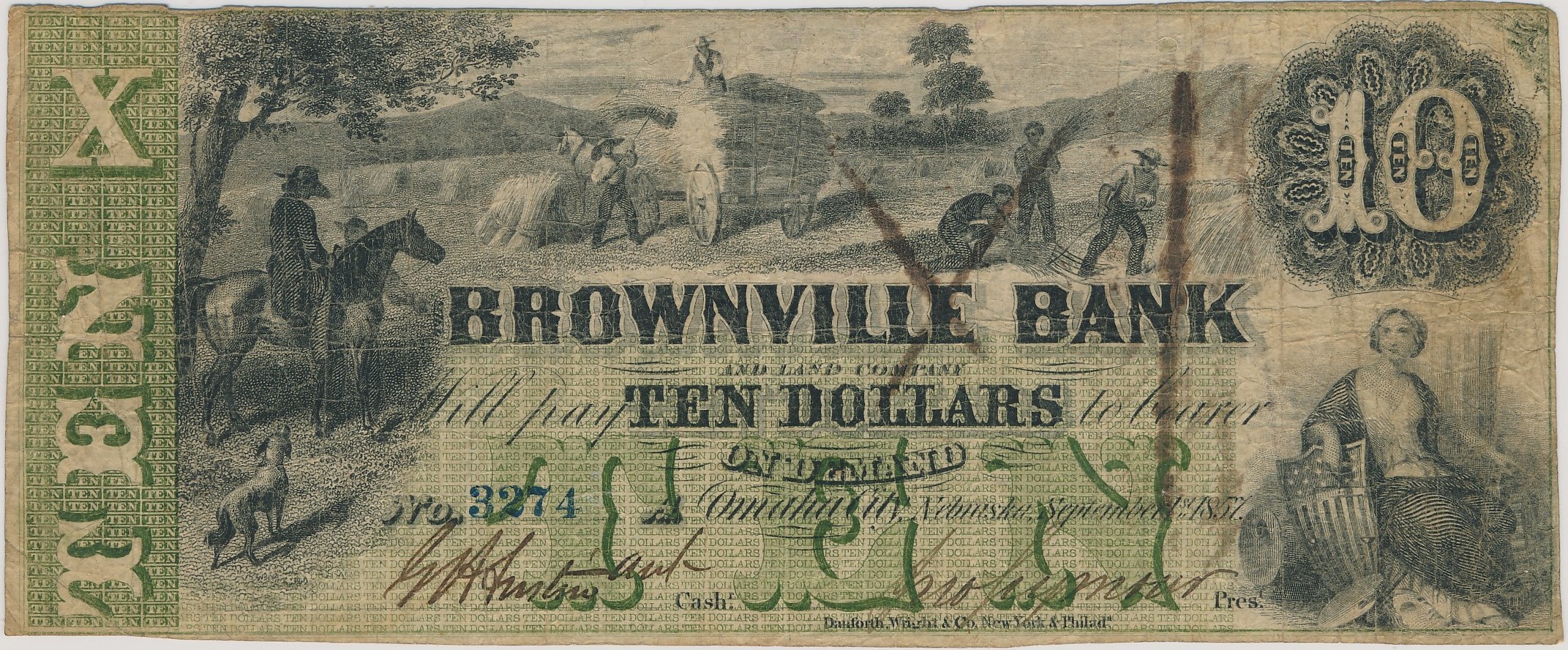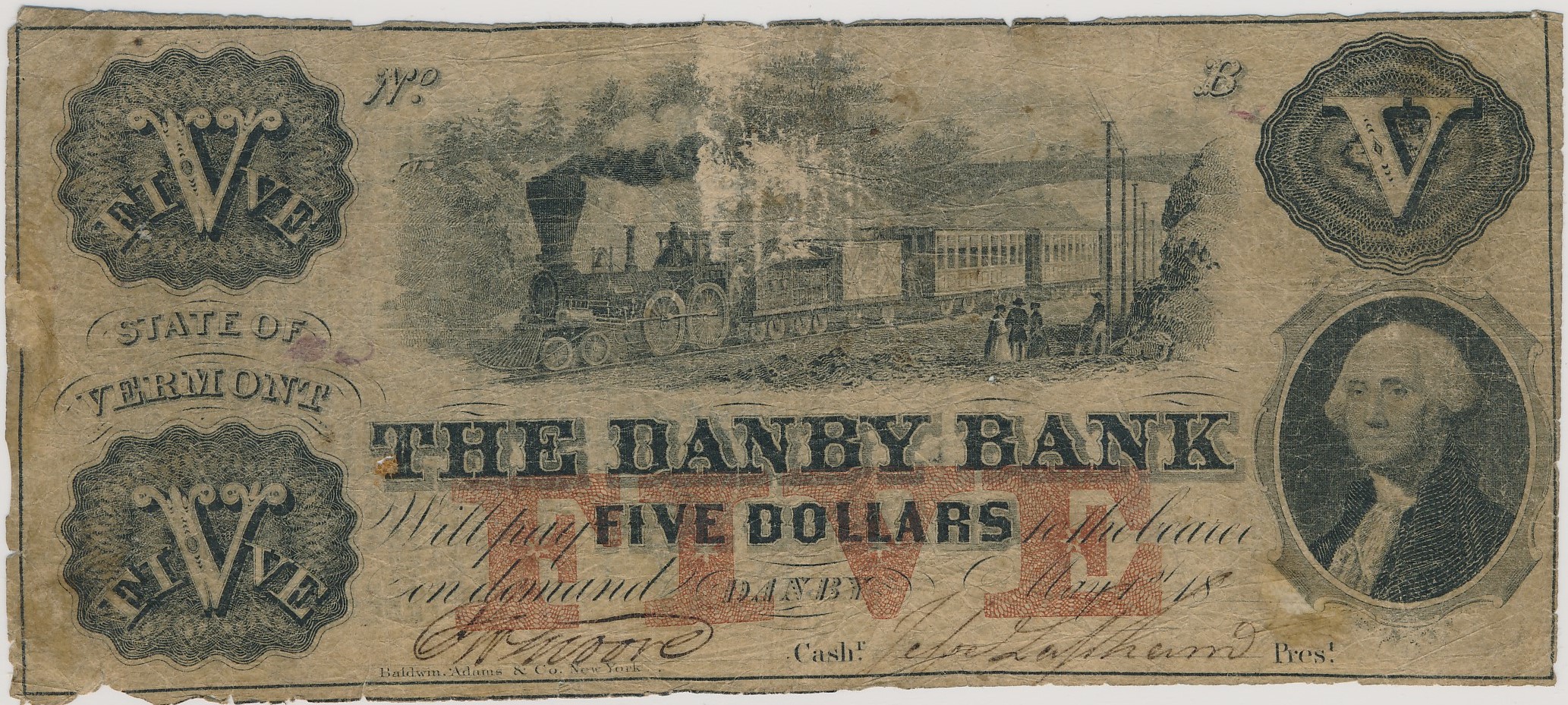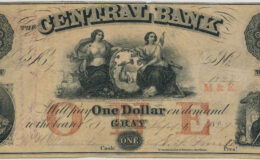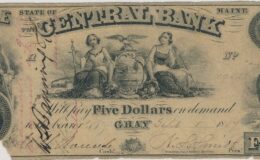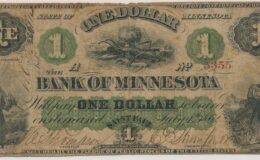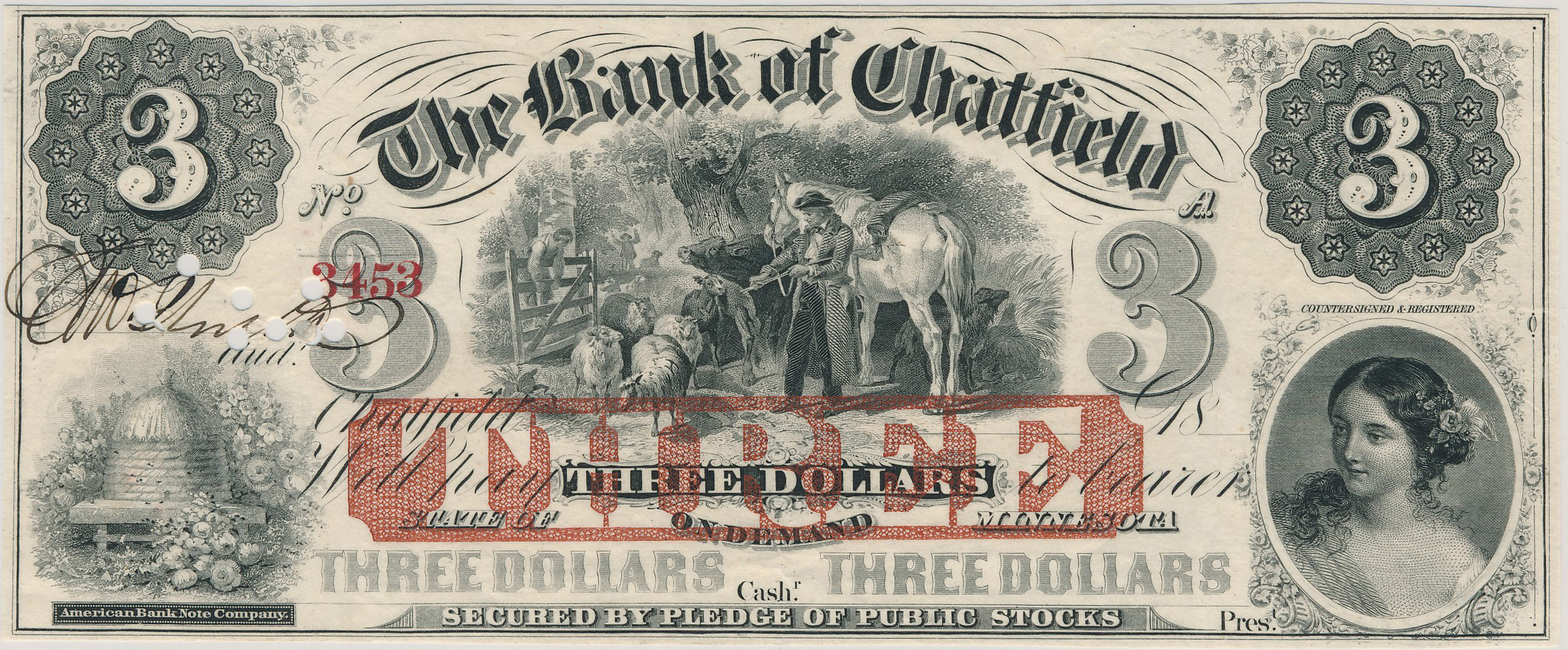Paper Money : Postcards : Collectibles
- shawn@shawnhewitt.com
- 651.491.3331
Treasurer of Ramsey County
Treasurer of Ramsey County
Ramsey County was established on October 27, 1849 and named for Alexander Ramsey, the first governor of Minnesota Territory. Robert A. Smith moved to Saint Paul in May 1853 and became private secretary to Governor Gorman. He was elected Treasurer of Ramsey County in May 1856 and served 12 years.
The first issue of notes was released from November 12, 1857 to June 7, 1858. It consisted of $1, $2, $3, $5 and $20 denominations. They were an important medium for commerce during a time of scarce currency. The $1s were issued with serial numbers 1-2788. A total of 77 were left unredeemed. The $2 notes were issued with serial numbers 1-4066, with some voids and double issue of some serial number ranges. A total of 56 $2 notes were left unredeemed.
The timing of the first issue suggests that the notes were issued just as much for the sake of commerce as they were to achieve short-term financing for the county. The financial panic of October 1857 left most bankers in Saint Paul insolvent. Silver and gold coin disappeared from circulation, and merchants were starved for a medium of exchange. They and the surviving bankers began to promote the heavy use of wildcat Tekama (Nebraska) and Gosport (Indiana) notes. The Treasurer of Ramsey County tried to alleviate the situation by issuing over $10,000 in currency.
The red-tinted notes were printed by American Bank Note Company in sheets and bound into books of 500 sheets. Each sheet included a $1, $2, $3 and $5 note. Notes were issued to number 1180 over the period from April 8, 1861 to June 22, 1863. Notes were redeemed as late as 1877. At that time 52 $1s were outstanding; 33 $2s; 19 $3s; and 13 $5s.
The issued notes of this series are always seen with an endorsement by a local banker. It is possible that bankers agreed to buy quantities of notes directly from the treasurer, perhaps at a discount, and then overprint the notes with an endorsement. The lowest serial numbers of notes, under 500, carry an endorsement of the Thompson Brothers. Notes in the 800-1000 range carry a Parker Paine endorsement. Notes over 1000 are seen with an E. S. Edgerton endorsement. These notes circulated at par or carried a slight premium.
The Minnesota Historical Society retains the remainders of the third book of drafts printed. From that book, 186 sheets were issued, 92 remainder sheets were removed, and 222 sheets remain bound in the book. It is believed that the 92 removed sheets constitute the entire census of remainder notes in private hands. Probably fewer than half of these sheets remain intact.
We want to buy paper money like you see here. If you have a note to sell, let us know.



















